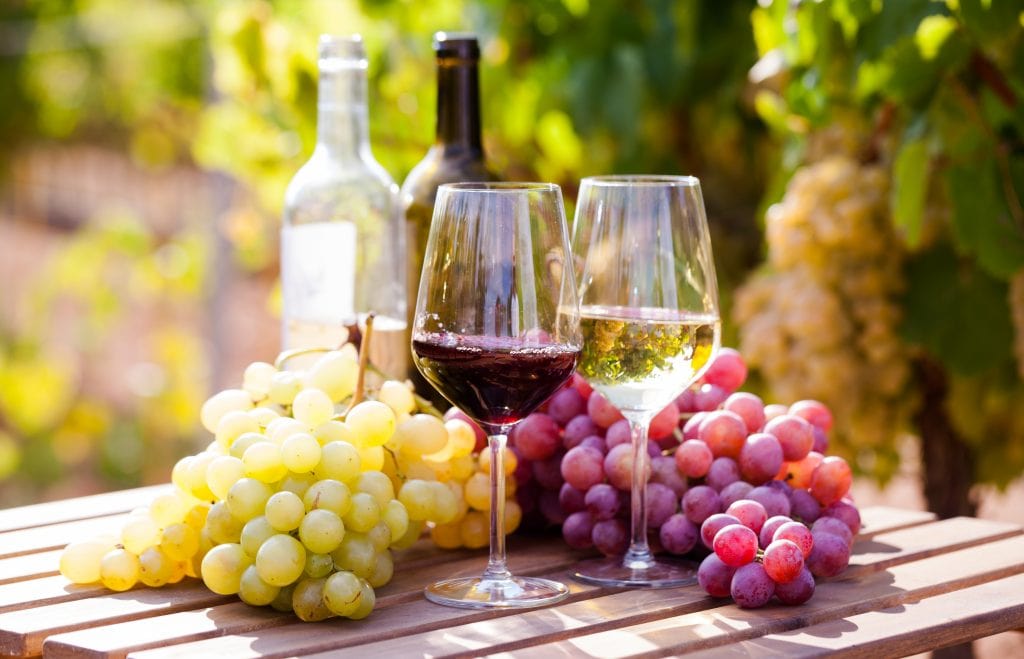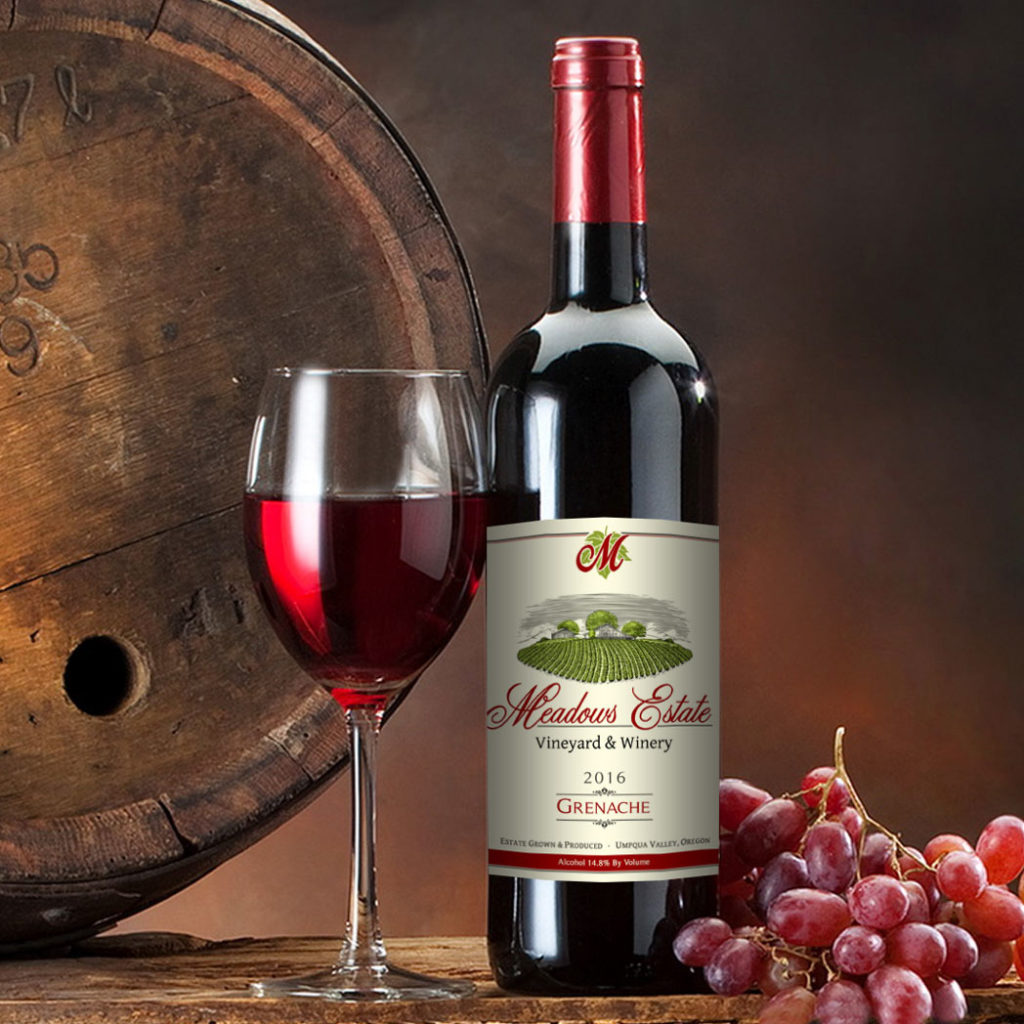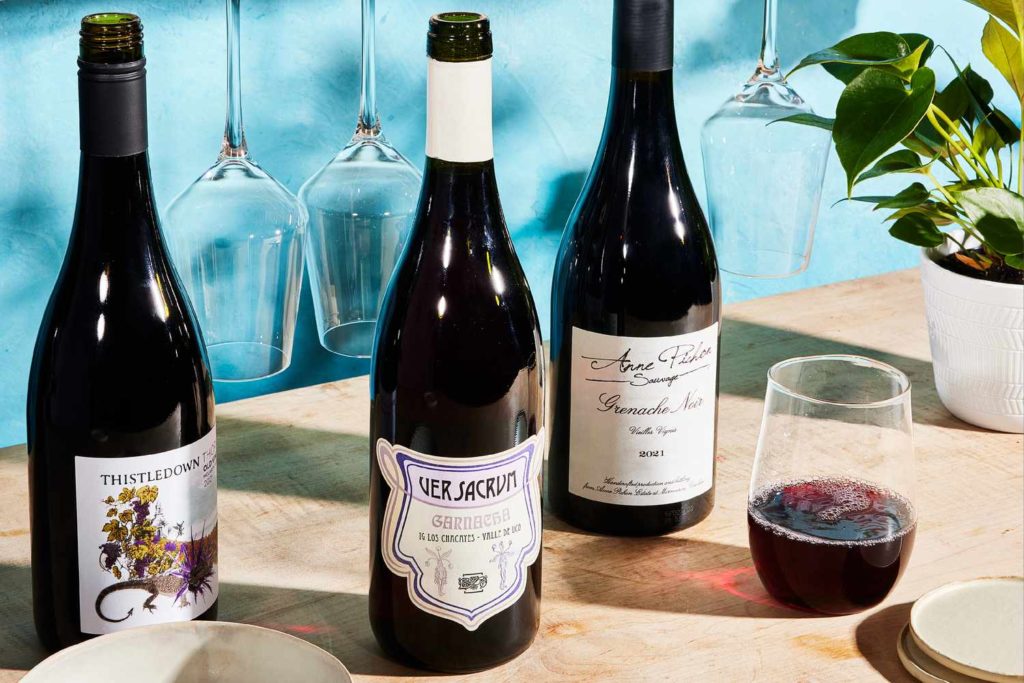Grenache, a red wine crafted from the Garnacha grape range, stands as a testimony to the artistry of winemaking. Widely cultivated in France, Spain, Australia, and the USA, Grenache wines are regarded for their medium to complete-bodied man or woman, vibrant shade, and a lovely mixture of aromas encompassing orange rind, raspberry, plum, and a touch of tobacco. Characterized using balanced tannins, medium acidity, and luxurious berries, Grenache has secured its area some of the most loved pink wine varieties. In this manual, we can unravel the tale of Grenache Wine, from its historical roots to the best wines available today.
The Origins of Grenache Wine:
Ancient Beginnings in Spain:


- Grenache, derived from the Garnacha grape variety, originated in Spain.
- Historical facts propose cultivation courting back to the 14th century.
- Aragon, specifically Calatayud, is considered the birthplace of Garnacha.
Spread to France:
- Grenache determined a second domestic in the Southern Rhône Valley of France.
- Flourished in regions like Châteauneuf-du-Pape, contributing to prestigious blends.
Global Journey:
- Spread throughout the Mediterranean, reaching Italy, Mediterranean islands, and beyond.
- Adapted to numerous climates, thriving in heat and arid conditions.
Pioneering Role in Washington State:
- Played a pivotal function in the early twentieth century in Washington’s wine industry.
- A 1966 Yakima Valley rosé earned recognition, marking a milestone.
Garnacha in Australia and the US:
- Thrived in Australia’s heat areas like Barossa Valley.
- Contributed to the improvement of the Washington wine industry inside the U.S.
Symbol of Resilience:
- Garnacha’s resilience to challenges like disease and adaptability to numerous landscapes.
- Symbolizes the long-lasting legacy of this grape variety.
Characteristics of Grenache Wine:
- Medium to Full-Bodied: Grenache usually shows off a medium to full-bodied shape.
- Bright Fruit Flavors: Vibrant red fruit flavors, which include raspberry and plum, are characteristic.
- Balanced Tannins: Grenache is acknowledged for its balanced tannins, providing structure.
- Medium Acidity: Moderate acidity contributes to an active and approachable profile.
- Aromas of Orange Rind and Tobacco: Aromas regularly consist of notes of orange rind, raspberry, plum, and a hint of tobacco.
- Velvety Texture: Smooth and velvety texture complements the overall mouthfeel.
- Adaptability in Blends: Commonly used in blends, complementing other grape sorts.
- Versatile Food Pairings: Versatility allows for pairing with several meals, from grilled meats to Mediterranean dishes.
- Evolves with Age: Grenache wines can evolve gracefully with age, showcasing additional complexities.
The Rise of Grenache in the Wine Industry:
Pioneering Role in Washington State:
- Grenache played a pivotal position in the early twentieth century in Washington’s wine industry.
- Notably stated in wine historian Leon Adams’ treatise, ‘The Wines of America.’
- The fulfillment of a 1966 Yakima Valley rosé marked a sizable milestone.
Contributions to Rhône-Style Blends:
- A vital part of Southern Rhône blends, including those from Châteauneuf-du-Pape.
- Known for adding vibrant fruit flavors, supple tannins, and a touch of spice.
Versatility and Adaptability:
- Grenache Wines’ versatility makes it in demand globally, thriving in various climates.
- Adaptable to distinct winemaking strategies, bearing in mind various expressions.
Recognition in Modern Wine Culture:
- Increasing popularity for Grenache’s approachable but complicated nature.
- Medium to full-bodied profile appeals to a wide range of wine fans.
Contribution to Blends and Single Varietals:
- Continues to play a crucial role in both conventional blends and as a standalone varietal.
- Winemakers test by showcasing Grenache’s specific traits.
Emphasis on Old-Vine Grenache:
- Growing efforts to hold and rejuvenate antique-vine Grenache vineyards.
- Acknowledgment of the depth and complexity contributed with the aid of ancient vines.
Global Success and Exploration:
- Grenache’s international achievement has caused the exploration of recent and numerous terroirs.
- New World regions, consisting of Australia and the US, embody Grenache.
Innovation and Experimentation:
- Winemakers experiment with fermentation, growing old, and blending strategies.
- Innovation contributes to a spectrum of Grenache styles, from classic to avant-garde.


The upward push of Grenache within the wine industry displays its adaptability, versatility, and ongoing exploration with the aid of winemakers. From its ancient roots to modern popularity, Grenache keeps forming the evolving panorama of the wine global.
Food Pairing with Grenache
Grilled Meats:
- Perfectly complements the flavors of grilled meats like steak, lamb chops, and barbecued bird.
- Balanced tannins and bright fruit flavors beautify the savory and smoky notes from the grill.
Mediterranean Cuisine:
- Harmonizes with Mediterranean dishes consisting of roasted lamb with herbs, moussaka, and ratatouille.
- Fruity individual complements olive oil, tomatoes, and Mediterranean herbs.
Spicy Cuisine:
- Ideal for pairing with spicy cuisines like Mexican, Indian, or Thai dishes.
- Ripe fruit flavors help quiet down warmth and offer a clean comparison.
Cheeses:
- Versatile enough to pair with plenty of cheeses, along with elderly Gouda, Manchego, and blue cheese.
- Acidity cuts via the richness, developing a delightful balance.
Poultry and Game Birds:
- Medium-bodied profile pairs well with roasted or grilled fowl and recreation birds.
- Red berry notes and subtle spiciness complement the flavors.
Vegetarian Dishes:
- Enhances vegetarian dishes such as eggplant Parmesan, mushroom risotto, and lentil stew.
- Adds intensity without overpowering sensitive vegetable flavors.
Charcuterie:
- Versatility extends to charcuterie boards, pairing nicely with cured meats like prosciutto and salami.
- Bright fruit notes complement the style of flavors on the board.
Spicy Barbecue:
- Well-suitable for spicy fish fry dishes, wherein its ripe fruit flavors balance the formidable spices.
- Brings out the smokiness and enhances the overall barbeque experience.
Popular Grenache Wines: A Closer Look
Grenache recognized for its numerous expressions and rich flavor profile, has produced a few incredible wines that captivate the palates of wine fanatics around the world. Here, we delve into 5 famous Grenache wines, each with its particular characteristics and story.
Châteauneuf-du-Pape Domaine de los angeles Présidente 2020:
Hailing from the esteemed Châteauneuf-du-Pape appellation inside the Southern Rhône Valley of France, Domaine de Los Angeles Presidente’s 2020 Grenache is a real embodiment of the place’s winemaking prowess. This wine offers a symphony of pink fruit aromas, consisting of ripe raspberry and cherry, with diffused recommendations of garrigue and spice. Its medium to complete-bodied palate is complemented by silky tannins, making it a super representation of the classic Grenache style from this renowned appellation.
Brave Goose Gosling Grenache 2021:
From the vineyards that brave the rugged landscapes of Australia comes the Brave Goose Gosling Grenache 2021. This Australian Grenache showcases the bold and adventurous spirit of the vicinity. Bursting with vibrant pink berry flavors, this wine is a pleasing expression of Grenache’s fruity profile. Its energetic acidity and smooth finish make it a versatile desire for various activities, whether or not enjoyed on its own or paired with several cuisines.
Continuum Red Blend 2019:
While not a single-varietal Grenache, the Continuum Red Blend 2019 merits mention for its inclusion of Grenache in a harmonious mixture. Hailing from the Napa Valley in California, this Bordeaux-fashion blend contains Grenache alongside different noble types. Expect a complicated interplay of darkish fruit, spices, and diffused alright effects. The Grenache provides a layer of brightness to the combo, contributing to its normal elegance and shape.
Yalumba Old Bush Vine Grenache:
From the Barossa Valley in Australia, Yalumba’s Old Bush Vine Grenache showcases the intensity and character that antique-vine Grenache can impart. These gnarled and weathered vines produce grapes with excessive attention and complexity. The wine exudes rich crimson fruit aromas, with a touch of earthiness and spice. Its velvety texture and nicely integrated tannins make it a standout example of the ability of antique-vine Grenache.


Cirillo ‘The Vincent’ Grenache 2021:
Named after the winemaker’s grandfather, ‘The Vincent’ Grenache from Cirillo is a tribute to the winemaking heritage of the Barossa Valley. This Australian Grenache gives a sensory journey with its brilliant crimson fruit aromas, floral notes, and a touch of white pepper. Its medium-bodied palate is marked with the aid of stability of acidity and tender tannins, making it an approachable and enjoyable expression of Grenache.
How to Choose and Store Grenache Wines:
Understand Grenache Styles:
- Recognize the variety in Grenache patterns, from ambitious Southern Rhône blends to fruit-ahead New World expressions.
- Determine your preference for conventional or progressive interpretations.
Research Producers:
- Familiarize yourself with authentic Grenache producers.
- Explore reviews, rankings, and pointers from relied-on resources or wine professionals.
Consider Vintages:
- Pay attention to the antique. Grenache wines can range in nice from year to year.
- Research climatic conditions of the vintage and are seeking advice on optimal years.
Old World vs. New World:
- Understand the variations between Old World and New World Grenache.
- Appreciate the earthy and mineral notes of Old World Grenache versus the ripe fruit of New World examples.
Explore Old-Vine Grenache:
- Consider exploring wines crafted from old-vine Grenache.
- Old vines frequently make contributions to wines with extra depth and complexity.
Storage Conditions:
- Store bottles horizontally in a fab, darkish, and humid environment.
- The ideal temperature is between 55-65°F (13-18°C) with humidity around 70% to save you cork drying.
Avoid Temperature Fluctuations:
- Keep Grenache wines far away from places with massive temperature fluctuations, inclusive of close to heating vents or windows.
Limit Vibrations:
- Store bottles far from regions prone to vibrations, as immoderate movement can disturb the growing older process.
Store Away from Odors:
- Grenache, like many wines, can take in external odors. Keep it far away from strong-smelling materials to maintain its integrity.
Serve at the Right Temperature:
- When equipped to experience, serve Grenache at the ideal temperature. Slightly cooler for younger wines and a chunk hotter for older, extra complicated ones.
The Future of Grenache:
Exploration of New Terroirs:
- Grenache’s global fulfillment prompts exploration in new and numerous terroirs.
- Expect particular expressions from regions yet to fully explore the ability of this flexible grape.
Innovation in Winemaking:
- Ongoing experimentation with fermentation, getting old, and mixing strategies.
- Winemakers pushing barriers to showcase Grenache’s various characteristics.
Sustainability Initiatives:
- Increasing consciousness on sustainable practices in Grenache vineyards.
- Adoption of natural and biodynamic farming to reduce environmental impact.
Preservation of Old-Vine Grenache:
- Growing efforts to protect and rejuvenate vintage-vine Grenache vineyards.
- Acknowledgment of the unique depth and complexity contributed to utilizing ancient vines.
Global Expansion:
- Continuation of Grenache’s global fulfillment with growth into various areas.
- New World regions embracing Grenache and contributing to its evolving narrative.
Rise of Single-Varietal Grenache:
- Increasing the reputation of Grenache as a standalone varietal, no longer just in blends.
- Anticipation of more remarkable single-varietal Grenache wines.
Technology Integration:
- Utilization of the era for precision viticulture and sustainable practices.
- Technology performs a role in improving grape best and typical winemaking methods.
Wine Tourism:
- Rising interest in wine tourism targeted Grenache-generating regions.
- Visitors searching for immersive reports in picturesque vineyards.
Consumer Education:
- Emphasis on educating clients about Grenache’s history and traits.
- Tasting occasions, instructional packages, and storytelling contribute to deeper appreciation.
Dynamic Range of Styles:
- Anticipation of a dynamic variety of Grenache patterns, from conventional to avant-garde.
- Ongoing evolution of Grenache, showcasing its adaptability and flexibility.
Additional Tips:
- Temperature for Serving: Serve Grenache wines barely chilled for a clean experience, mainly in warmer climates. The ideal serving temperature for young Grenache is around 60-65°F (15-18°C).
- Decanting for Aeration: Consider decanting older Grenache to allow them to respire and open up. Aeration complements the expression of flavors and aromas in greater complex Grenache bottles.
- Exploring Blends: Explore Grenache-based blends for numerous tasting revelations. Discover the impact of Grenache in conventional blends like GSM (Grenache, Syrah, Mourvèdre).
- Aging Potential: While many Grenaches are approachable whilst young, a few exceptional bottles can age gracefully. Explore the aging capacity of Grenache, especially the ones from renowned areas.
- Glassware Matters: Use a wine glass with a large bowl to capture Grenache’s fragrant profile. The form of the glass complements the wine’s expression and your basic taste.
Conclusion:
In the end, exploring the arena of Grenache wine unveils a rich tapestry of flavors, records, and evolving traits. From its historic roots in Spain to its worldwide impact, Grenache showcases adaptability, making it a favorite among winemakers and lovers alike. The upward thrust of Grenache inside the wine enterprise, marked through its contributions to blends and as a standalone varietal, reflects its enduring enchantment. As we look to the future, Grenache guarantees persevered innovation, sustainability, and a dynamic range of patterns.


Whether playing the bright fruit notes of a New World Grenache or savoring the complexity of an Old World conventional, the adventure via Grenache wines is a lovely exploration of terroir, craftsmanship, and the timeless artwork of winemaking. Here’s to the long-lasting legacy and interesting destiny of Grenache—a grape that continues to captivate and surprise with every sip. Cheers!
FAQs:
Q1: What is Grenache wine?
A1: Grenache wine is crafted from the Grenache grape range, called Garnacha in Spain. It produces medium to complete-bodied wines with vibrant fruit flavors, balanced tannins, and a versatile profile. Grenache is widely grown in France, Spain, Australia, and the US.
Q2: What are the key traits of Grenache?
A2: Grenache is characterized by using a medium to complete body, colorful crimson fruit flavors (which include raspberry and plum), balanced tannins, medium acidity, and aromas of orange rind and tobacco. They regularly exhibit a velvety texture and can evolve gracefully with age.
Q3: What are a few famous Grenaches?
A3: Notable Grenache encompass Châteauneuf-du-Pape Domaine de l. A. Presidente 2020, Brave Goose Gosling Grenache 2021, Continuum Red Blend 2019, Yalumba Old Bush Vine Grenache, and Cirillo ‘The Vincent’ Grenache 2021.
Q4: How will Grenache be served?
A4: Grenache is pleasant and served slightly chilled for a fresh experience, specifically in warmer climates. Young Grenache wines are typically served at temperatures around 60-65°F (15-18°C).
Q5: What foods pair properly with Grenache wine?
A5: Grenache is versatile and pairs properly with grilled meats, Mediterranean delicacies, highly spiced dishes, cheeses, roosters, recreation birds, vegetarian dishes, and charcuterie. Its adaptability makes it suitable for an extensive variety of culinary stories.
READ MORE: Unveiling the Artistry: The 10 Best Mezcal Cocktails
